Lulu Li
Automated Review Generation Method Based on Large Language Models
Jul 30, 2024
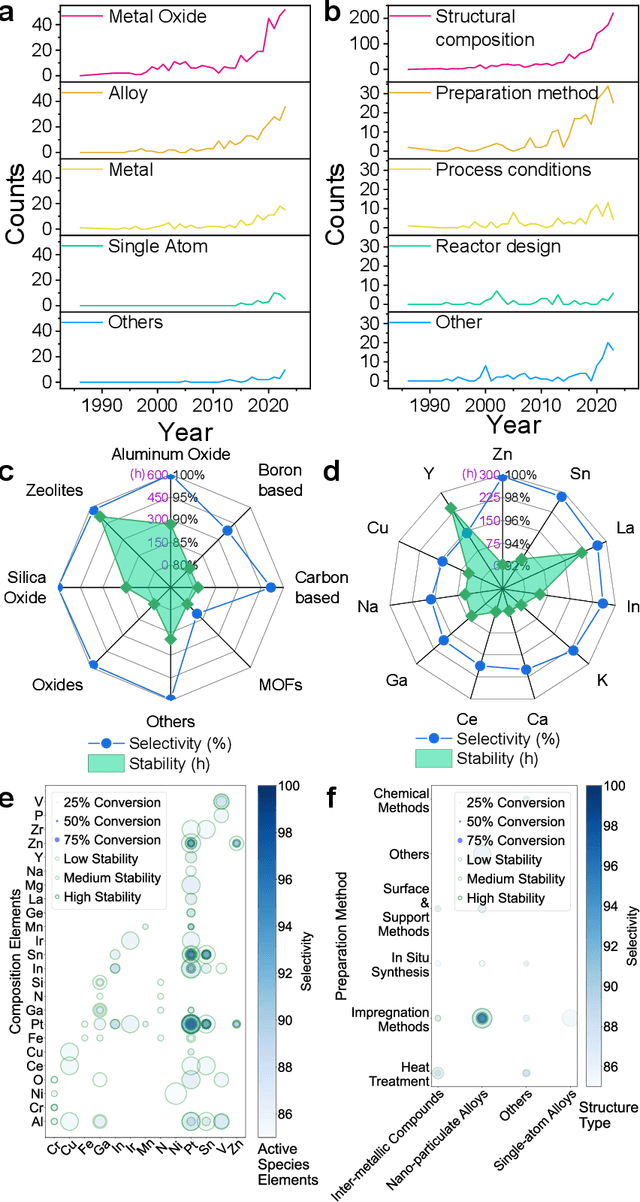


Abstract:Literature research, vital for scientific advancement, is overwhelmed by the vast ocean of available information. Addressing this, we propose an automated review generation method based on Large Language Models (LLMs) to streamline literature processing and reduce cognitive load. In case study on propane dehydrogenation (PDH) catalysts, our method swiftly generated comprehensive reviews from 343 articles, averaging seconds per article per LLM account. Extended analysis of 1041 articles provided deep insights into catalysts' composition, structure, and performance. Recognizing LLMs' hallucinations, we employed a multi-layered quality control strategy, ensuring our method's reliability and effective hallucination mitigation. Expert verification confirms the accuracy and citation integrity of generated reviews, demonstrating LLM hallucination risks reduced to below 0.5% with over 95% confidence. Released Windows application enables one-click review generation, aiding researchers in tracking advancements and recommending literature. This approach showcases LLMs' role in enhancing scientific research productivity and sets the stage for further exploration.
YOLOv6 v3.0: A Full-Scale Reloading
Jan 13, 2023

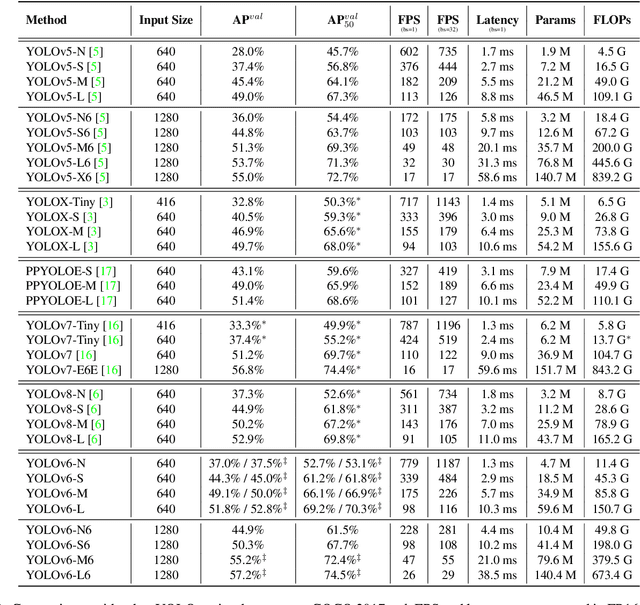
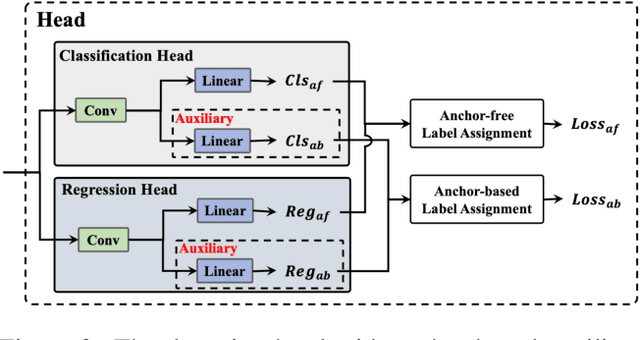
Abstract:The YOLO community has been in high spirits since our first two releases! By the advent of Chinese New Year 2023, which sees the Year of the Rabbit, we refurnish YOLOv6 with numerous novel enhancements on the network architecture and the training scheme. This release is identified as YOLOv6 v3.0. For a glimpse of performance, our YOLOv6-N hits 37.5% AP on the COCO dataset at a throughput of 1187 FPS tested with an NVIDIA Tesla T4 GPU. YOLOv6-S strikes 45.0% AP at 484 FPS, outperforming other mainstream detectors at the same scale (YOLOv5-S, YOLOv8-S, YOLOX-S and PPYOLOE-S). Whereas, YOLOv6-M/L also achieve better accuracy performance (50.0%/52.8% respectively) than other detectors at a similar inference speed. Additionally, with an extended backbone and neck design, our YOLOv6-L6 achieves the state-of-the-art accuracy in real-time. Extensive experiments are carefully conducted to validate the effectiveness of each improving component. Our code is made available at https://github.com/meituan/YOLOv6.
YOLOv6: A Single-Stage Object Detection Framework for Industrial Applications
Sep 07, 2022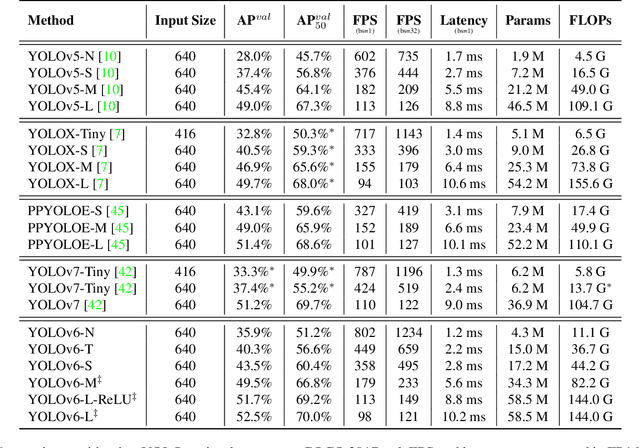

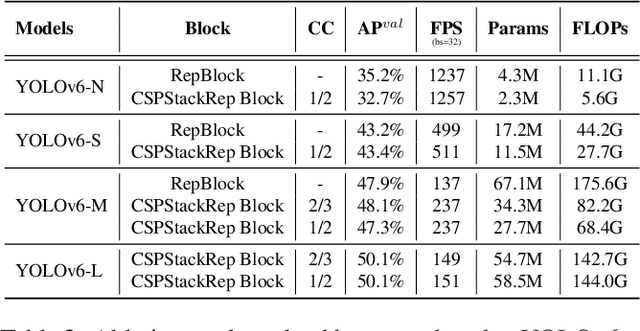
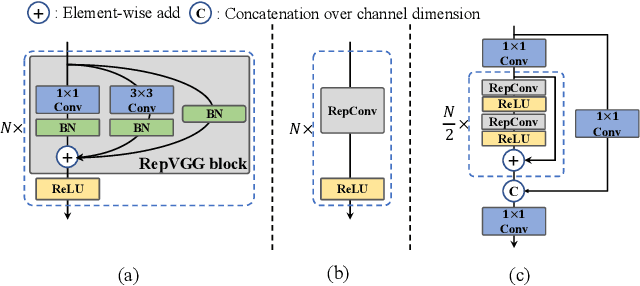
Abstract:For years, the YOLO series has been the de facto industry-level standard for efficient object detection. The YOLO community has prospered overwhelmingly to enrich its use in a multitude of hardware platforms and abundant scenarios. In this technical report, we strive to push its limits to the next level, stepping forward with an unwavering mindset for industry application. Considering the diverse requirements for speed and accuracy in the real environment, we extensively examine the up-to-date object detection advancements either from industry or academia. Specifically, we heavily assimilate ideas from recent network design, training strategies, testing techniques, quantization, and optimization methods. On top of this, we integrate our thoughts and practice to build a suite of deployment-ready networks at various scales to accommodate diversified use cases. With the generous permission of YOLO authors, we name it YOLOv6. We also express our warm welcome to users and contributors for further enhancement. For a glimpse of performance, our YOLOv6-N hits 35.9% AP on the COCO dataset at a throughput of 1234 FPS on an NVIDIA Tesla T4 GPU. YOLOv6-S strikes 43.5% AP at 495 FPS, outperforming other mainstream detectors at the same scale~(YOLOv5-S, YOLOX-S, and PPYOLOE-S). Our quantized version of YOLOv6-S even brings a new state-of-the-art 43.3% AP at 869 FPS. Furthermore, YOLOv6-M/L also achieves better accuracy performance (i.e., 49.5%/52.3%) than other detectors with a similar inference speed. We carefully conducted experiments to validate the effectiveness of each component. Our code is made available at https://github.com/meituan/YOLOv6.
Multi-Agent Broad Reinforcement Learning for Intelligent Traffic Light Control
Mar 08, 2022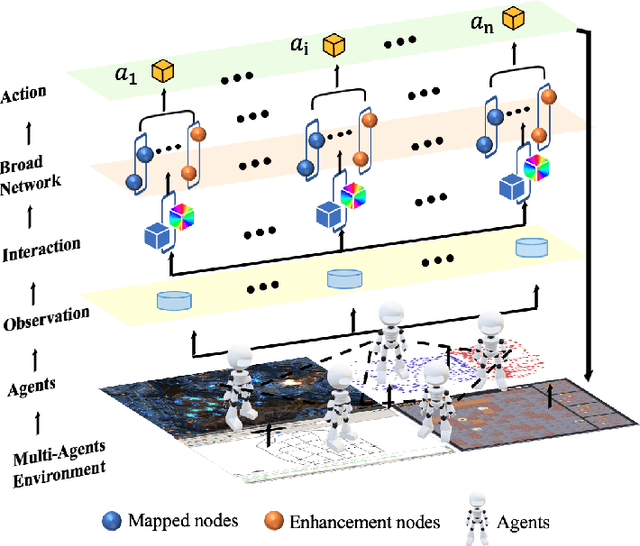
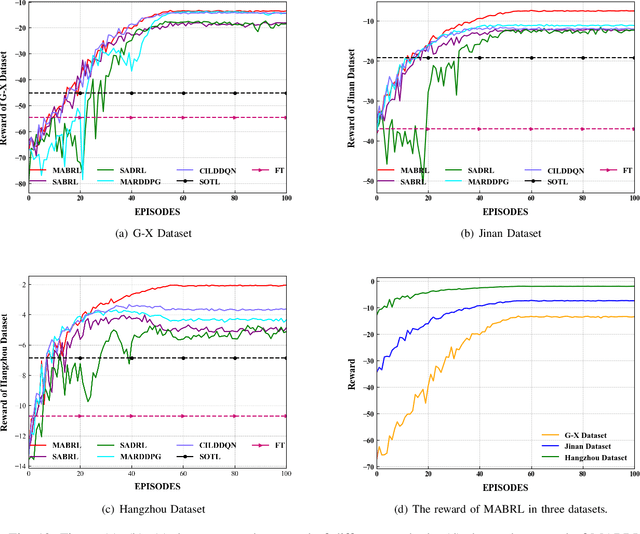
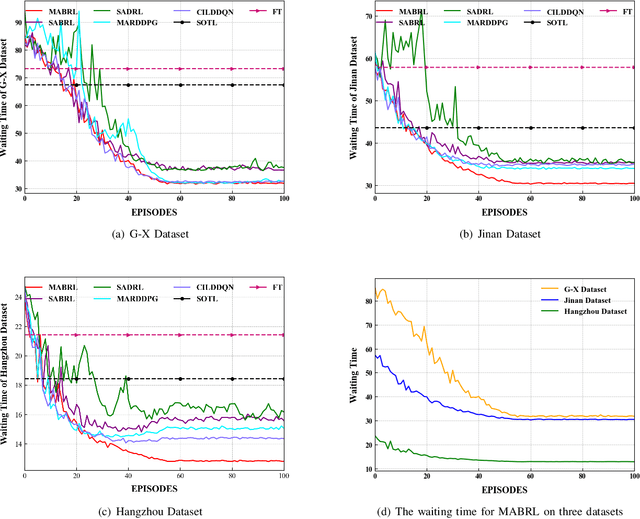

Abstract:Intelligent Traffic Light Control System (ITLCS) is a typical Multi-Agent System (MAS), which comprises multiple roads and traffic lights.Constructing a model of MAS for ITLCS is the basis to alleviate traffic congestion. Existing approaches of MAS are largely based on Multi-Agent Deep Reinforcement Learning (MADRL). Although the Deep Neural Network (DNN) of MABRL is effective, the training time is long, and the parameters are difficult to trace. Recently, Broad Learning Systems (BLS) provided a selective way for learning in the deep neural networks by a flat network. Moreover, Broad Reinforcement Learning (BRL) extends BLS in Single Agent Deep Reinforcement Learning (SADRL) problem with promising results. However, BRL does not focus on the intricate structures and interaction of agents. Motivated by the feature of MADRL and the issue of BRL, we propose a Multi-Agent Broad Reinforcement Learning (MABRL) framework to explore the function of BLS in MAS. Firstly, unlike most existing MADRL approaches, which use a series of deep neural networks structures, we model each agent with broad networks. Then, we introduce a dynamic self-cycling interaction mechanism to confirm the "3W" information: When to interact, Which agents need to consider, What information to transmit. Finally, we do the experiments based on the intelligent traffic light control scenario. We compare the MABRL approach with six different approaches, and experimental results on three datasets verify the effectiveness of MABRL.
 Add to Chrome
Add to Chrome Add to Firefox
Add to Firefox Add to Edge
Add to Edge